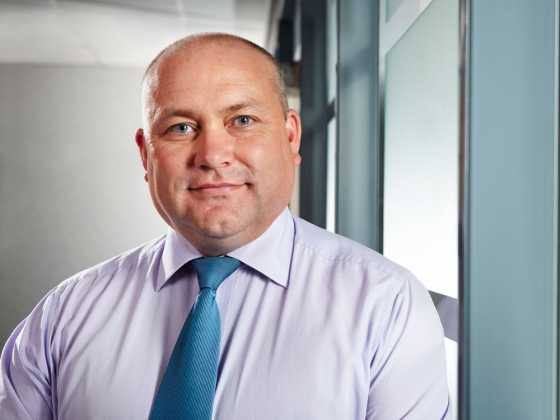Japan sets hearts racing as Tokyo drives the future
The 44th Tokyo Motor Show closed the side door on the motoring year at the Tokyo Big Sight on the 29 October to 8 November 2015. With 160 exhibitors present and 75 world premieres, the Tokyo Motor Show was an event to behold.
 Aiming to become the top technology motor show in the world, Tokyo hosted a comprehensive show as expressive in Japanese style as expected, exhibiting 417 vehicles, including passenger cars, commercial vehicles and motorcycles, amongst others.
Aiming to become the top technology motor show in the world, Tokyo hosted a comprehensive show as expressive in Japanese style as expected, exhibiting 417 vehicles, including passenger cars, commercial vehicles and motorcycles, amongst others.
Held every two years in the heart of Japan’s capital, the show contains a mixture of wonderful concept cars and new production cars, primarily from Japanese manufacturers.
Smart Mobility
Smart Mobility was a popular aspect of the Tokyo Motor Show. Shining a light on the next generation of cars, Smart Mobility City 2015 offered an experience and glimpse into the city of the future. The centerpiece of this exhibition, ‘Station Core’, showcases various new technologies and systems that relate to cities and transportation.
In the space in front of the train station lies various micro mobility vehicles readied for test-rides. The course that takes drivers from inside to the freeing outdoors offers a realistic and exhilarating driving experience received much attention from press overseas.
The ‘Personal Mobility Lab’ displayed the latest in personal mobility solutions, a genre of vehicles that aim for a symbiotic relationship between cars and people. The vehicles have unique designs, and were also available for test rides. Autonomous cars and technologies that received considerable attention at the Tokyo Motor Show were explained in detail at the ‘cars and ICT&E Lab. Connected cars were explained using projection mapping and visuals projected on the table.
The hum of hydrogen
Hydrogen was a key theme of this year’s show, with Toyota offering an insight into its fuel cell-operated models. The highly anticipated, and much discussed S-FR sports car headed up the Toyota line-up, but it was the FCV Plus Concept that stole the attention of the watching audience.
Having become the first manufacturer to launch a production-powered fuel cell car in the Mirai, the FCV Plus contains a more compact rearrangement of the Mirai’s fuel-cell stack and hydrogen tanks. The FCV Plus concept explores how the hydrogen fuel cell used to power a car can also be deployed to as an energy source for general use. As well as having its own hydrogen fuel tank, the FCV Plus can generate electricity from hydrogen stored outside the vehicle, so the car can be used to produce power in different locations – at home, at work, or further afield.
When the car is not being used for transport, it can share its power generation capabilities with communities as part of the local infrastructure. The fuel cell stack can be reused as a device to generate electricity, going beyond the traditional functions of a car.
Toyota’s luxury vehicle division, Lexus, also joined in the hydrogen hype at the show. With the revealing of the LF-FC concept, Lexus is acting as a forward-thinking manufacturer, with the hydrogen fuel cell electric powertrain operating as a four-wheel drive system.
This innovative drive system allows precise torque distribution control between the front and wheels, giving the vehicle exceptional handling and stability. The strategic location of the fuel cell stack at the rear and the power control unit at the front and the arrangement of the hydrogen fuel tanks in a T-formation result in optimum front-rear weight distribution for a sporty saloon.
Taxi for Toyota
Toyota also revealed its plans to launch a new taxi for the Japanese market before April 2018, and is currently working on developing an updated version of its JPN Taxi Concept, which made its global debut at the 2013 Tokyo Motor Show. The updated model was shown via a promotional video at the show.
Toyota hopes that the vehicle, created to embody the spirit of Japanese hospitality, will become a common sight on city streets―much the way the Toyota Crown Comfort is considered the archetypal taxi throughout the country today.
Just like its previous concept, the next‑generation taxi features a hatchback-type package. With its low floor and wide-opening sliding door, the vehicle will provide outstanding ease of ingress and egress, and its spacious interior will even allow passengers to board in a wheelchair. The vehicle aims to conform to the Japanese government’s goal of providing buses and taxis that are barrier‑free and tailored specifically to local needs.
The taxi will feature a liquefied petroleum gas (LPG) hybrid system―currently under development―which is highly economical and offers excellent environmental performance optimised for taxi driving conditions. In addition, Toyota is focusing on making this vehicle durable enough to withstand long-distance usage.
Future production
Another Japanese manufacturer keen to showcase its latest innovation was Mitsubishi, who displayed its eX, the bold electric SUV concept car that will hit the market within five years. Taking design inspiration from the XR‑PHEV, the eX differs from its predecessor due to its purely electric, all-wheel drive system. While it may take a few years to take to the roads, the eX marks Mitsubishi’s aim to tackle the small SUV market. The car is expected to be capable of 248 miles on a single charge and contains a next-generation battery pack.
Nissan also unveiled a glimpse into its vision for the future. The Nissan IDS Concept will tackle the issues of autonomous driving and zero-emission EVs, with Carlos Ghosn, Nissan president and CEO, stating that the IDS Concept will ‘revolutionise the relationship between car and driver, and future mobility’.
Ghosn is adamant that by 2020, Nissan Intelligent Driving technology will be deployed on cars in cities around the world, with innovative autonomous drive technology driving the company forward.
With both Manual and Piloted Drive submitting to the driver’s own style and preferences, the IDS Concept assists the driver in taking evasive action in the event of imminent danger and possesses sensors which continuously monitor conditions and external information, such as the weather and the driver’s schedule.
The IDS Concept is fitted with a high-capacity 60kWh battery, and thanks to its aerodynamics, low stance, flowing form and reduced weight due to its full-carbon-fibre body, the vehicle is designed to also meet the need to drive long distances. Other technologies on the Nissan IDS Concept include Piloted Park that can be operated by smartphone or tablet, and wireless charging technologies, allowing the driver to leave parking and charging to the car.
Bringing clarity into the market
Honda has revealed that its new hydrogen‑powered car will be called FCV Clarity, and will be coming to the UK in 2017. The car, present at the Tokyo Motor Show whet the appetite of the locals as it is scheduled to go on sale in Japan next March. It is the successor to the previous hydrogen
model, the FCX Clarity.
Powering the FCV Clarity is an electric motor which provides over 134bhp – it’s supplied by a fuel cell stack which is both smaller and denser than that used on the FCX. Honda also says the new FCV is the first car of its type to feature the entire fuel cell powertrain packaged within the engine bay–- something which should enable the FCV Clarity to match the storage space and packaging offered by conventional cars. The FCV has a claimed driving range of 435 miles, and can be filled from a hydrogen filling station in as little as three minutes.
Daihatsu revealed its 94.1mpg concept car at the show, with the D-Base expected to reach production next year. It is one of several vehicles unveiled that conform to Japan’s small kei car regulations. Kei cars are restricted in size, engine displacement and power output, and are given tax and parking breaks in Japan as a result.
The market for such cars is hugely important to car makers in Japan, where they account for almost 40 per cent of all sales. The D-Base concept shows the styling of the next-generation Daihatsu Mira kei car, which is known in Japan as one of the most fuel-efficient cars in the class. In a statement, Daihatsu said the D-Base is a ‘proposal for a new basic small car’ and is being shown ‘to express the spirit of innovation in the next generation of environmental vehicles’.
To meet kei car regulations, it is 3.4 metres long, 1.48 metres wide and 1.49 metres high and powered by a 660cc three-cylinder engine. Fuel economy, which is boosted by regenerative braking, is claimed to be 94.1mpg on the Japanese test cycle.
Mercedes unveiled its Tokyo Vision concept at the show. The German manufacturer claims the vehicle is a showcase of the company’s vision of the future for driverless luxury travel. It follows in a long line of Mercedes Vision concept cars that have revealed technological advances that went on to feature in future Mercedes production models.
The F 015 concept, a previous Mercedes Vision Concept, was powered by a hydrogen fuel cell drive system, and the Tokyo concept is expected to preview an updated version of that same powertrain.
Celebrating the crazy
Despite being the oldest Japanese car manufacturer, Daihatsu is far from traditional. The Daihatsu Noriori resembles a mini-minibus, with accessibility a clear intention. With virtually no incline, a low floor to allow for easy wheelchair access and caster like wheels, the model is built specifically with the disabled in mind. Access is taken further into account with sliding side doors, and rear access.
Every now and then a designer is given free range over an idea, and that is what Toyota has claimed with the unveiling of the Kikai. With questionable safety visible through the exposed mechanicals, the three‑seater arrangement, and with the driver located centrally, the concept would also have very high production costs.
Further Information
www.tokyo-motorshow.com/eu






